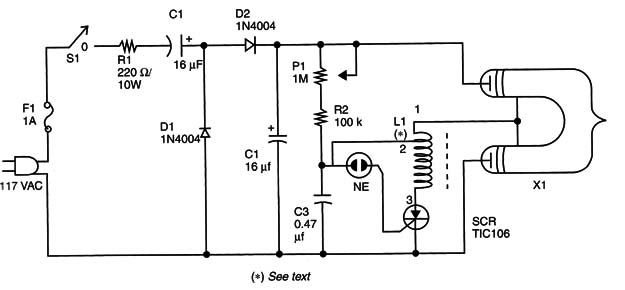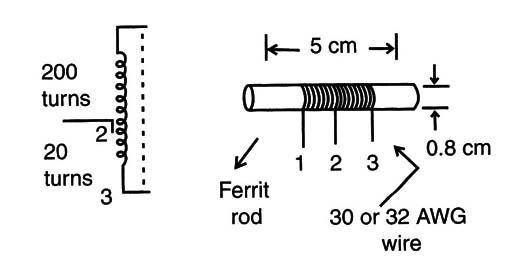Common xenon lamps are used in photographic cameras, beacons, and in stroboscopic light sources such as the one described here.
To trigger a xenon lamp, very high voltage pulses are necessary, up to 4 kilovolts or more, and to produce the light pulses a large capacitor is needed to provide the necessary energy.
In the circuit shown in Figure 1, a voltage doubler is used to charge the capacitor C2 with a voltage near 300 volts when plugged into the 117 VAC power line.
The power will depend on the value of the capacitors. Values between 10 and 22 µF are recommended.

The pulse rate is determined by P1. This component controls the speed of the C3’s charging process.
When C3 reaches about 80 volts, the neon lamp turns on. Then C3 discharges across T1, generating a fast, high-voltage pulse of about 4 kilovolts, enough to trigger the xenon lamp.
When triggered, the gas inside the lamp becomes onductive, allowing the capacitor C2 to discharge across the lamp. The result is a powerful flash of light.
When the capacitor C2 discharges, the lamp turns off and a new cycle of operation begins.
Any small xenon lamp powered by a few joules can be used. The trigger transformer can be bought with the lamp, but if you intend to use a lamp found an a old-style flash attached to a camera, the transformer can be wound as shown in Figure 2.

According to the lamp, you can change the capacitors C1 and C2 to get more power.
SCR: TIC106B SCR
D1, D2: 1N4004 (117 VAC) or 1N4007 (220/240
VAC) silicon rectifier
diodes
NE: NE-2H or equivalent neon lamp
X1: Xenon lamp (see text)
R1: 220 ohm x 10 W wire-wound resistor
R2: 100 k ohm 1/8 W resistor, brown, black, yellow
P1: 1 M ohm lin or log potentiometer
C1, C2: 16 µF x 200 V (117 VAC) or 400 V (220/240 VAC) electrolytic capacitors (see text)
C3: 0.47 µF x 100 V or more polyester capacitor
T1: 4 kV trigger transformer (see text)
F1: 1 A fuse and holder
Other: Power cord, PCB, plastic box, wires, knob for the potentiometer, solder, etc.




